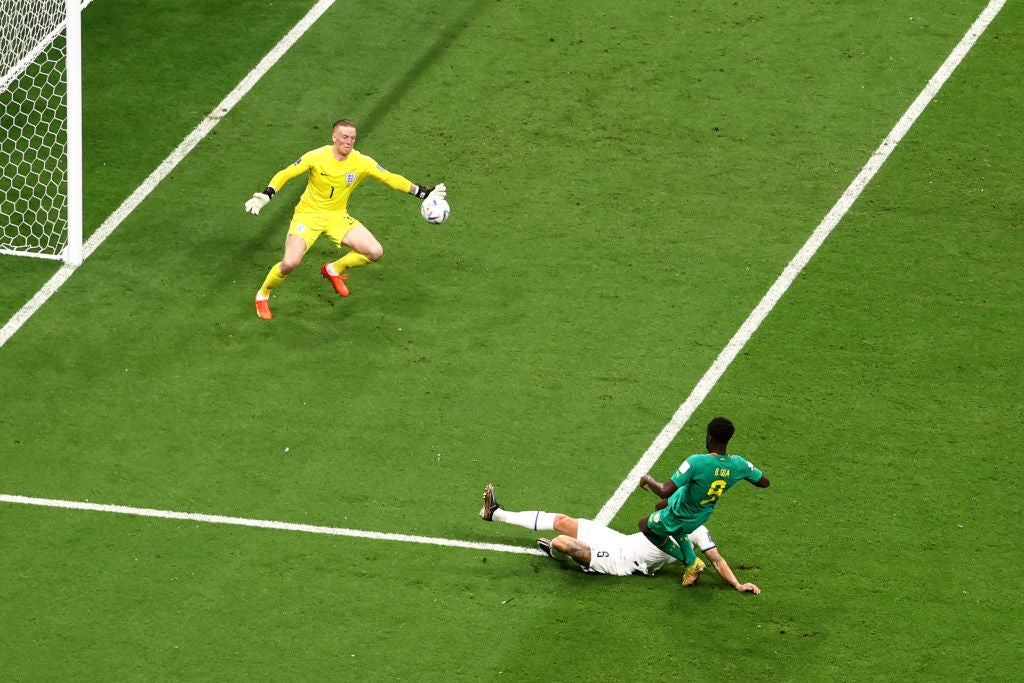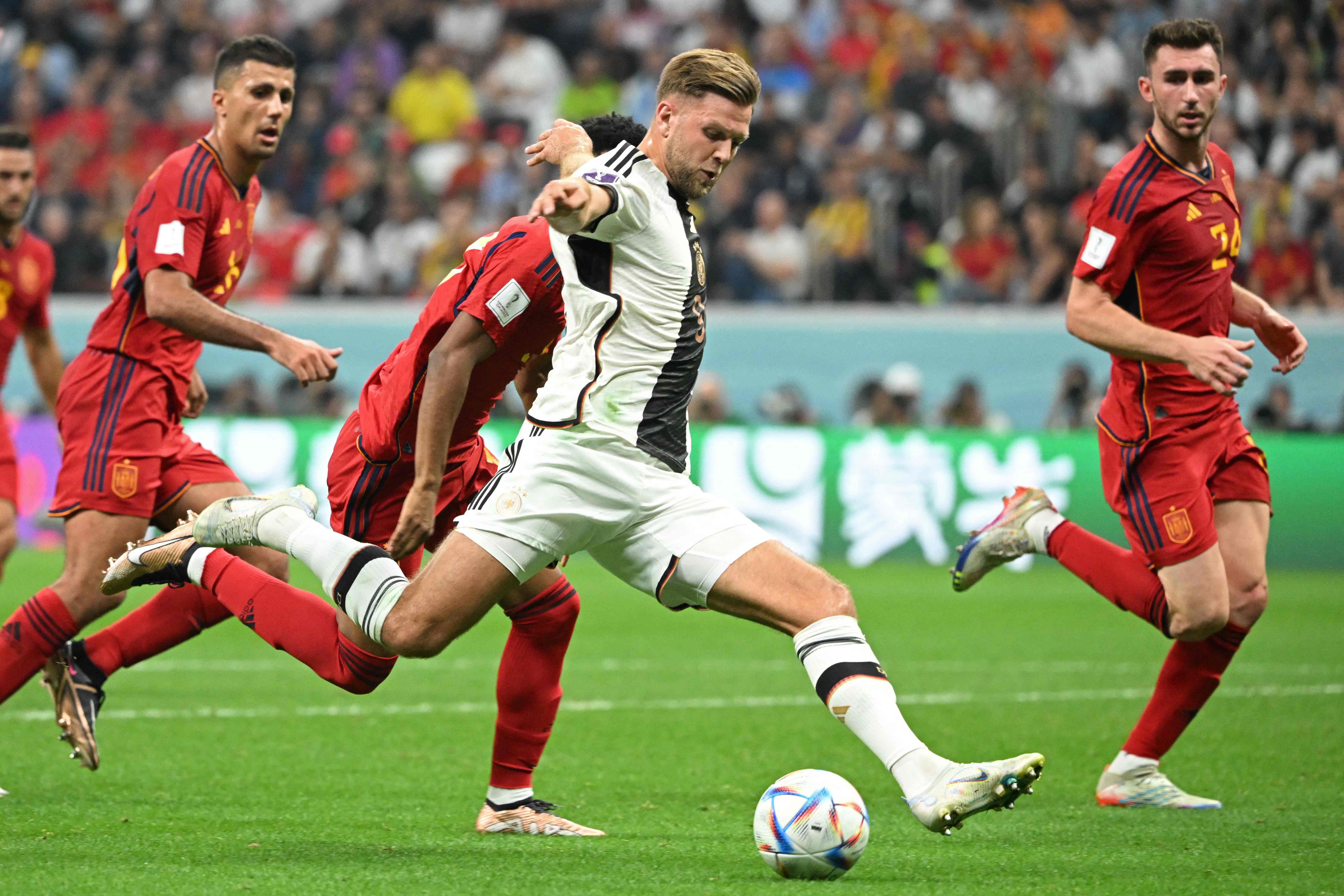This World Cup has shown us the most important position in football
The lack of a legitimate or in-form centre-forward has proven the death knell for many teams in Qatar

Your support helps us to tell the story
From reproductive rights to climate change to Big Tech, The Independent is on the ground when the story is developing. Whether it's investigating the financials of Elon Musk's pro-Trump PAC or producing our latest documentary, 'The A Word', which shines a light on the American women fighting for reproductive rights, we know how important it is to parse out the facts from the messaging.
At such a critical moment in US history, we need reporters on the ground. Your donation allows us to keep sending journalists to speak to both sides of the story.
The Independent is trusted by Americans across the entire political spectrum. And unlike many other quality news outlets, we choose not to lock Americans out of our reporting and analysis with paywalls. We believe quality journalism should be available to everyone, paid for by those who can afford it.
Your support makes all the difference.The way Gregg Berhalter put it: “We lacked that offensive finishing quality.” As the United States tumbled out of the World Cup, it may have been a more diplomatic, distinctly American way of saying his side needed a striker.
They are not alone in that but Berhalter tried three in four games, attempted an interlude with a false nine, and got a solitary goal from a centre-forward: Haji Wright’s fluke of a finish against the Netherlands. “We don’t have a Memphis Depay right now,” the USA manager concluded.
He was right and they are not alone. If it is a statement of the obvious to say everyone else in the World Cup would want a Kylian Mbappe or a Lionel Messi, plenty would settle for a Depay, a forward with 43 international goals and one who was capable of supplying a clinical touch in a knockout match.
The sides in Qatar – or not any more, in most cases – can be divided into the haves and the have-nots: those who have possessed a suitable striker and those without. It is not as simple as saying the eight quarter-finalists have the finest out-and-out centre-forwards but there is a trend.
Consider one of the great underachievers. “The football simply sucked,” said Kasper Hjulmand after Denmark’s early exit, with a lone point. The coach’s verdict may have been different had their 34 shots produced more than a solitary goal, and even that came courtesy of a centre-back. His forwards were all hideously out of form.
For Tunisia, the lack of a centre-forward, at least until Wahbi Khazri was belatedly positioned up front, led to a lack of goals despite otherwise impressive performances. Mexico’s meagre return of two goals included one from the forward Henry Martin, but they lacked the necessary end product. Senegal may wonder if the first-half chances they spurned against England would have had a different outcome if Sadio Mane had been fit.

Because several of the sides who did not have a functioning, firing centre-forward may have thought they would. For all their other failings, Belgium were ultimately eliminated because a semi-fit Romelu Lukaku missed a hatful of chances he would normally take. Canada also came up short: it may have been different but for a display of profligacy from Jonathan David against Roberto Martinez’s side.
The abiding images of Uruguay’s World Cup were provided by a striker, whether Luis Suarez setting up two goals against Ghana or ending up in tears when he realised it was not enough. Yet while Suarez and Edinson Cavani are closing in on 1,000 goals for club and country between them, neither added to his tally. Darwin Nunez was ineffective, too, and Uruguay’s only scorer was a midfielder, Giorgian de Arrascaeta.
There was the side that had perhaps the most feared striker of his generation but used him too little. Robert Lewandowski took two penalties, scoring one, but had inadequate service otherwise. He scored from one of his two shots on target in open play. At times, though, it felt as though Poland were relying on Lewandowski’s sheer presence to generate chances.
Then there is a subcategory of the side who had a centre-forward without really realising it. Niclas Fullkrug ranks among both the super-subs and cult heroes of the tournament. He was also a magnificent throwback, an old-fashioned German No 9. He only played 66 minutes in the World Cup. Germany scored four goals in that time and Fullkrug got two of them. Had he started a match, perhaps Hansi Flick’s side would still be in Qatar. Germany exited with the numbers making a case for the specialist striker. They had an xG of 10.1, the highest in the group stage, but with Thomas Muller mounting a sadly unconvincing impression of a No 9, their tally of six goals proved insufficient.

His presence in attack reflects a shift in footballing thinking. It is a sign of the Guardiolaisation of football that the No 9 has come to resemble a dinosaur, soon to become extinct amid the search for attacking midfielders, wingers and false nines. Teams may be creating a different kind of chance. None of the four players with the most shots so far – Kylian Mbappe, Lionel Messi, Jamal Musiala and Serge Gnabry – has been operating as a conventional striker. If what used to be the glamour position now resembles the weakest link, it may in part be because a change in priorities has meant too little attention has been devoted to forging the next generation of centre-forwards.
Indeed, one of the most effective strikers in Qatar comes from a previous generation, in Olivier Giroud. Richarlison, who also sits on three goals, has been a vibrant presence leading the line for Brazil. Harry Kane has just one but his skills as a supplier have benefited England. The Netherlands have both Depay and Cody Gakpo, each a high-class forward if not an old-fashioned centre-forward. Louis van Gaal nevertheless has three of those, courtesy of his decision to stockpile his squad with No 9s, in Vincent Janssen, Wout Weghorst and Luuk de Jong. For now, they are competing to be his plan B.
Alvaro Morata served that role with Spain, being a scoring substitute in their first two matches, if not when it mattered more against Morocco; their exit with 1,000 passes and one shot on target should prompt questions if their policy of overloading with midfielders has started to backfire.
For Portugal, the striker held in reserve now looks like the starter, the hat-trick hero Goncalo Ramos both illustrating his own potential and showing there is an alternative No 9 to the ageing Cristiano Ronaldo. They, at least, have some sense of a future up front. But much of the rest of the footballing world has evolved to a state where everyone needs their own Fullkrug.



Join our commenting forum
Join thought-provoking conversations, follow other Independent readers and see their replies
Comments